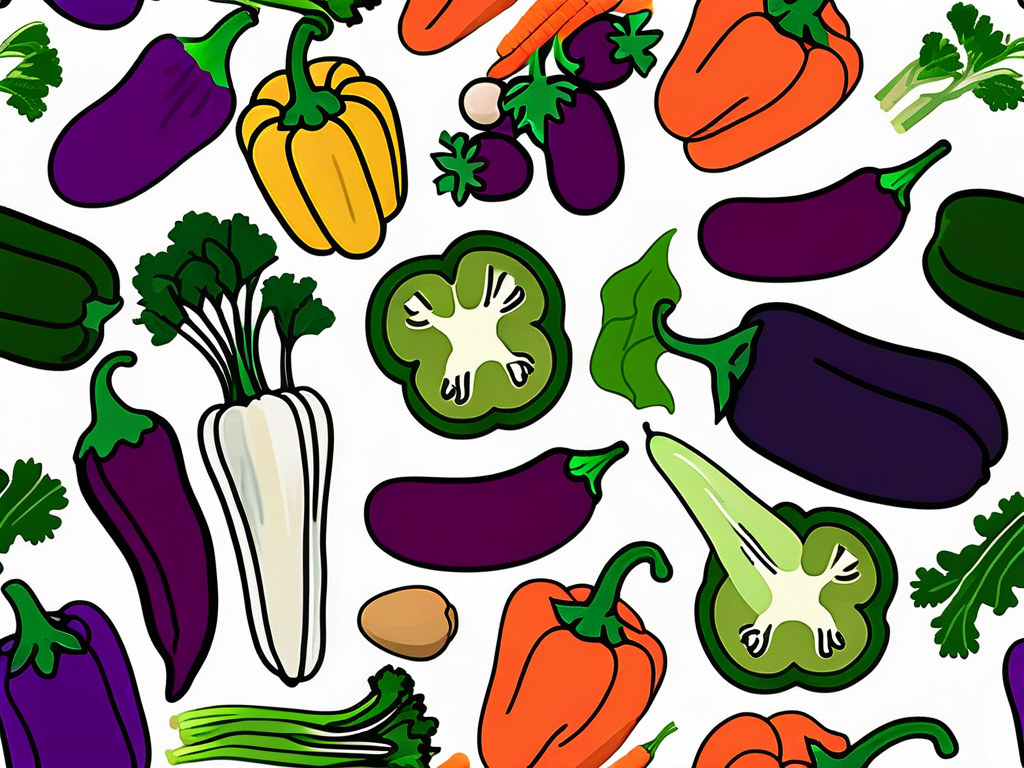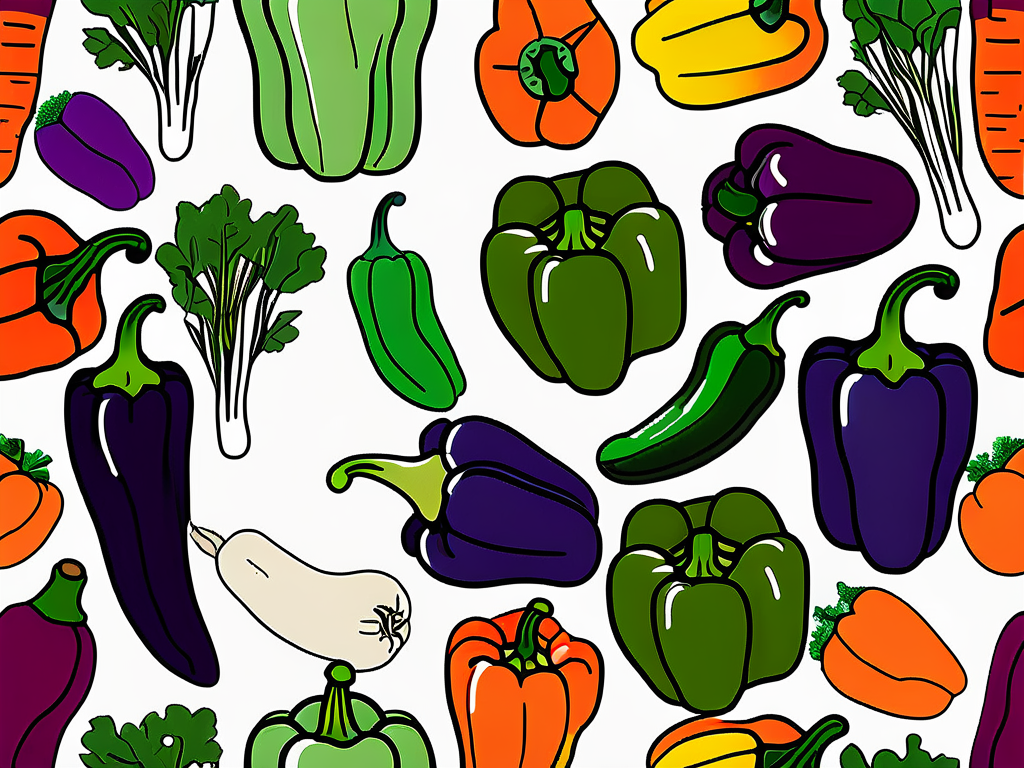In recent years, the low FODMAP diet has gained significant attention as an effective way to manage digestive symptoms, particularly for individuals with irritable bowel syndrome (IBS). Understanding which vegetables are low FODMAP can be crucial for those following this diet. In this article, we will delve into the world of FODMAPs, explore why some individuals may need a low FODMAP diet, and uncover the role of vegetables in this specialized eating plan.
Understanding FODMAPs
Before we dive into the low FODMAP vegetable options, let's first understand what FODMAPs are. FODMAP is an acronym that stands for Fermentable Oligosaccharides, Disaccharides, Monosaccharides, and Polyols. These are short-chain carbohydrates and sugar alcohols that can be difficult for some individuals to digest properly.

The fermentation process of FODMAPs in the gut can lead to symptoms such as bloating, gas, abdominal pain, and diarrhea in those with sensitive digestive systems. By reducing the intake of high FODMAP foods, including certain vegetables, it is possible to alleviate these distressing symptoms and achieve digestive comfort.
What are FODMAPs?
FODMAPs are a collection of different carbohydrates and sugar alcohols that can be found in various foods. This includes fruits, vegetables, grains, dairy products, and sweeteners. There are four main types of FODMAPs:
- Oligosaccharides: This includes fructans and galacto-oligosaccharides (GOS), which can be found in wheat, rye, onions, garlic, and legumes.
- Disaccharides: Lactose is the main disaccharide, commonly found in milk and dairy products.
- Monosaccharides: Fructose is the primary monosaccharide, found in honey, apples, pears, and high-fructose corn syrup.
- Polyols: These are sugar alcohols like sorbitol, mannitol, xylitol, and maltitol, which are often used as sweeteners in sugar-free products and can be found naturally in some fruits and vegetables.
Why Some People Need a Low FODMAP Diet
Individuals with conditions such as Irritable Bowel Syndrome (IBS) often experience increased sensitivity to FODMAPs. The consumption of high FODMAP foods can trigger symptoms and lead to significant discomfort. By following a low FODMAP diet, people can identify their trigger foods and alleviate the symptoms associated with their condition.
It is crucial to note that the low FODMAP diet is not a long-term solution but rather a temporary elimination and reintroduction plan to identify specific trigger foods. Once trigger foods are identified, individuals can tailor their diet accordingly, ensuring they still receive the necessary nutrients while avoiding those foods that cause symptoms.
Now, let's take a closer look at each type of FODMAP:
Oligosaccharides
Oligosaccharides are complex carbohydrates made up of a chain of sugar molecules. Fructans and galacto-oligosaccharides (GOS) fall under this category. Fructans are commonly found in wheat, rye, onions, garlic, and legumes, while GOS can be found in legumes, lentils, and certain grains. These carbohydrates can be difficult to digest for some individuals, leading to symptoms such as bloating and gas.
Disaccharides
Disaccharides are double sugar molecules. Lactose, the main disaccharide, is commonly found in milk and dairy products. People with lactose intolerance have difficulty digesting lactose due to a deficiency in the enzyme lactase. This can result in symptoms such as bloating, abdominal pain, and diarrhea.
Monosaccharides
Monosaccharides are single sugar molecules. Fructose, the primary monosaccharide, is naturally present in fruits, honey, and certain vegetables. High levels of fructose can be difficult to absorb for some individuals, leading to symptoms such as bloating, gas, and diarrhea. Fructose is also commonly found in high-fructose corn syrup, which is used as a sweetener in many processed foods and beverages.
Polyols
Polyols are sugar alcohols that have a sweet taste but are not fully absorbed by the body. Sorbitol, mannitol, xylitol, and maltitol are examples of polyols. They are often used as sweeteners in sugar-free products and can be found naturally in some fruits and vegetables. Consuming high amounts of polyols can lead to symptoms such as bloating, gas, and diarrhea in individuals with sensitive digestive systems.
By understanding the different types of FODMAPs and their sources, individuals can make informed choices about their diet and manage their symptoms effectively.
The Role of Veggies in a Low FODMAP Diet
Vegetables play a vital role in any healthy diet, providing essential nutrients, fiber, and antioxidants. But how do vegetables fit into a low FODMAP diet? Let's explore their importance and how they can impact FODMAP levels.

Importance of Vegetables in Nutrition
Vegetables are a crucial component of a well-balanced diet. They are rich in vitamins, minerals, and dietary fiber, which are vital for overall health and wellbeing. Incorporating a variety of vegetables into your meals can help support a healthy immune system, promote optimal digestion, and provide the necessary fuel for various bodily functions.
Did you know that different colored vegetables offer different health benefits? For example, red and orange vegetables like carrots and bell peppers are packed with beta-carotene, which is converted into vitamin A in the body and is essential for good vision and a healthy immune system. On the other hand, green leafy vegetables like spinach and kale are excellent sources of folate, a B-vitamin that plays a crucial role in cell growth and development.
Furthermore, vegetables offer a wide range of flavors, textures, and colors, making meals more appealing and enjoyable. Whether you're roasting a medley of colorful veggies or adding them to a refreshing salad, the variety that vegetables bring to the table is truly remarkable. With so many delicious and nutritious options available, it's essential to find ways to incorporate low FODMAP vegetables into your diet.
How Veggies Can Impact FODMAP Levels
While vegetables are generally considered a healthy food group, certain types can be high in FODMAPs and may trigger symptoms in individuals with sensitive stomachs. However, many vegetables are naturally low in FODMAPs and can be enjoyed without worries.
It's important to note that cooking methods can also affect the FODMAP levels in vegetables. For example, boiling vegetables can leach out some of the FODMAPs, making them more tolerable for those following a low FODMAP diet. On the other hand, roasting or grilling vegetables can intensify their flavors and create a delicious caramelization, but it may also increase the FODMAP content in some cases.
Understanding which vegetables are low FODMAP allows individuals to make informed choices and create meals that are both nutritious and easy on their digestive system. By selecting the right vegetables, individuals can incorporate them into their low FODMAP eating plan and continue to enjoy the many benefits they provide.
Comprehensive List of Low FODMAP Veggies
Now that we understand the significance of vegetables in a low FODMAP diet, let's explore a comprehensive list of low FODMAP veggies. Remember, these are just a few examples, and you can experiment with various vegetables to find the ones that work best for you.
Root Vegetables
- Carrots
- Parsnips
- Potatoes
- Sweet potatoes
- Turnips
- Rutabaga
Leafy Greens
- Spinach
- Lettuce
- Kale
- Swiss chard
- Bok choy
- Collard greens
Cruciferous Vegetables
- Broccoli (florets)
- Cauliflower (florets)
- Green beans
- Zucchini
- Cucumber
- Celery
How to Incorporate Low FODMAP Veggies into Your Diet
Now that we have a solid understanding of the low FODMAP vegetable options available, it's time to look at how we can incorporate them into our daily meals. Let's explore some meal planning tips and quick and easy low FODMAP recipes to inspire your culinary creativity.

Meal Planning Tips
- Begin by creating a meal plan for the week.
- Ensure you have a variety of low FODMAP vegetables on hand.
- Experiment with different cooking methods to enhance flavor.
- Consider batch cooking and freezing portions for convenience.
Quick and Easy Low FODMAP Recipes
1. Baked Salmon with Roasted Root Vegetables:
- Preheat the oven to 400°F (200°C).
- Place salmon fillets on a baking sheet and season with salt, pepper, and lemon juice.
- In a separate baking dish, combine chopped carrots, parsnips, and turnips with olive oil, salt, and rosemary.
- Roast both the salmon and vegetables for 15-20 minutes, or until cooked through.
- Serve with a side of steamed green beans or spinach.
Maintaining a Balanced Diet on Low FODMAP
While it's essential to focus on low FODMAP vegetables, it's equally important to consider other essential nutrients to maintain a balanced diet. Here are a few key nutrients and their sources:
Other Essential Nutrients and Where to Find Them
- Protein: Chicken, fish, eggs, tofu, and lactose-free dairy products.
- Carbohydrates: Gluten-free grains like rice, quinoa, and gluten-free bread.
- Healthy fats: Avocado, olive oil, nuts, and seeds.
- Vitamins and minerals: Incorporate a variety of fruits, low FODMAP vegetables, and fortified products.
- Hydration: Stay well-hydrated by drinking water throughout the day.
Potential Risks of a Low FODMAP Diet and How to Avoid Them
While the low FODMAP diet can be highly beneficial for managing digestive symptoms, there are a few potential risks to be aware of:
1. Nutrient deficiencies: Since certain high FODMAP foods are restricted, it's important to ensure you are still meeting your nutritional needs by incorporating a wide range of low FODMAP alternatives.
2. Fiber intake: Some high-fiber foods are also high in FODMAPs. To avoid a decreased fiber intake, include low FODMAP sources such as potatoes, carrots, and leafy greens in your diet.
3. Limited food variety: Cutting out high FODMAP foods may lead to a limited selection of ingredients. To combat this, experiment with different low FODMAP recipes and incorporate a diverse range of vegetables to keep your meals exciting and satisfying.
In conclusion, understanding which vegetables are low FODMAP is essential for individuals following this specialized diet. By incorporating a variety of low FODMAP vegetables into your meals, you can enjoy a well-balanced diet while minimizing symptoms. Remember to consult with a healthcare professional or registered dietitian for personalized advice and guidance on your low FODMAP journey.